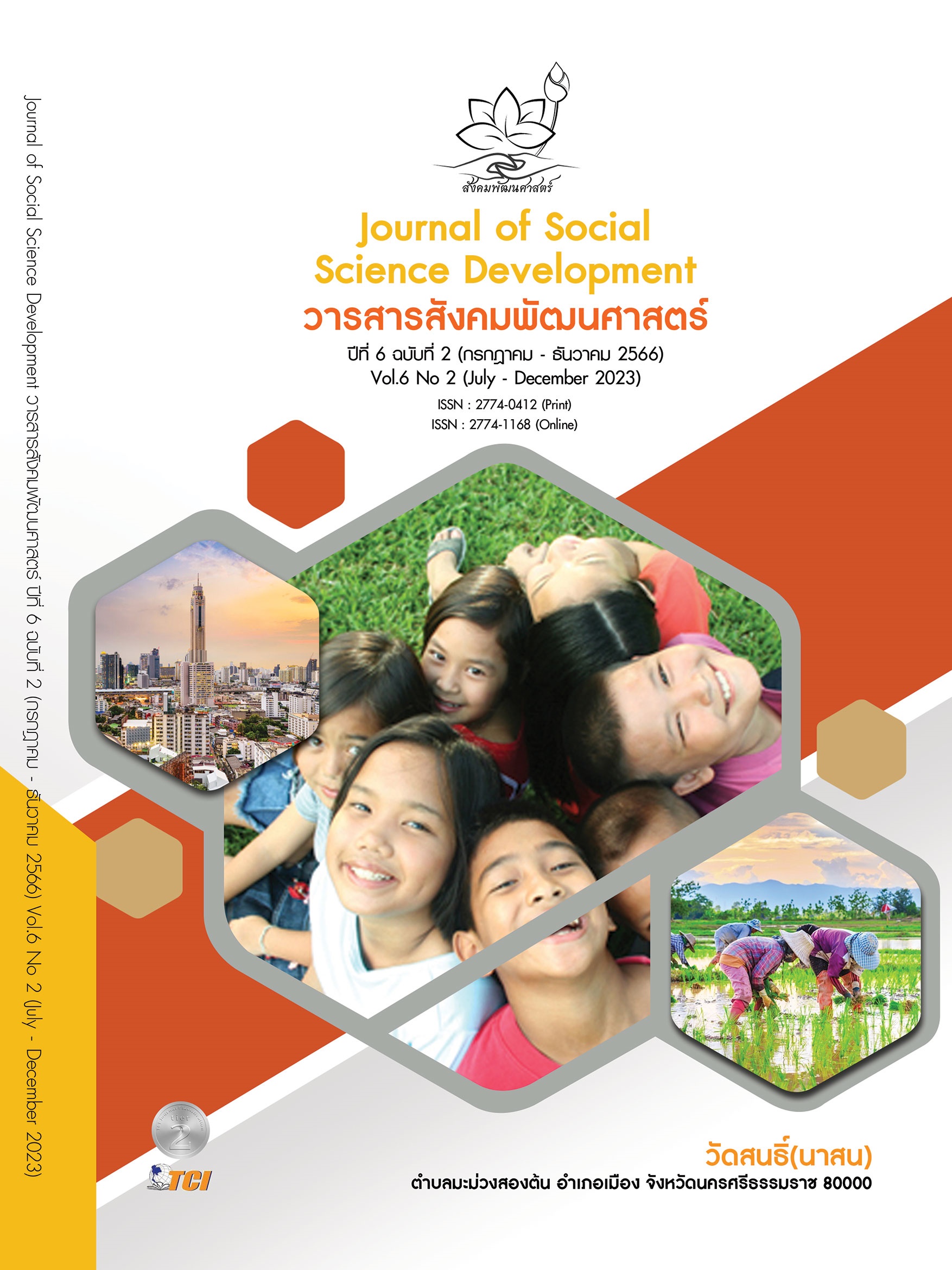KHRUE MOR PI: RITUAL AND BELIEF OF KHRUE MOR PI IN BAN NA TO THAEM, VILLAGE NO.11, NONG HONG SUB-DISTRICT, THUNG SONG DISTRICT, NAKHON SI THAMMARAT PROVINCE
Main Article Content
Abstract
The aims of this research were to study the ritual and belief of Khrue Mor Pi and study the guidelines of conservation and inheritance of Khrue Mor Pi from a case study in Ban Na To Thaem of Village No.11, Nong Hong Sub-district, Thung Song District, Nakhon Si Thammarat Province. Key informants consisted of 1) The main informant, which was the first group that consisted of one spirit medium, 2) The secondary informants, which was the second group that consisted of three spirit medium reservists, 3) The group of three ritual organizers, 4) The group of five people who were interested in regularly participating with the ritual, and 5) The three successors of Khrue Mor Pi. Ritual and belief of Khrue Mor Pi in Ban Na To Thaem, Village No.11, Nong Hong Sub-District, Thung Song District, Nakhon Si Thammarat Province used interview forms to collect data and analyze the data with descriptive analytics. The results showed that: 1) The ritual of conjuring Khrue Mor Pi found that the preparation of worshipping must have prepared flowers, joss sticks, and candles to organize the ritual. In the first step of the ritual, there must have been the conjuring to summon the spirit of Khrue Mor Pi to dwell in the medium because all sacred things must have had their teachers. After that, the oboe of the Kalor band would have been played. 2) The ritual of curing the sickness from the victim of black magic found that the belief of Khrue Mor Pi in the Kalor band pertained to sickness. The people in ancient times emphasized this matter because they believed these sacred things helped protect and anchor their minds. The offering for Khrue Mor Pi was conducted two times per year, during the fifth and tenth lunar months, according to the traditions of the ancient people.
Article Details

This work is licensed under a Creative Commons Attribution-NonCommercial-NoDerivatives 4.0 International License.
References
ชลภัสส์ วงษ์ประเสริฐ. (2551). ภูมิปัญญาชาวบ้านในงานพัฒนา. วารสารสังคมการพัฒนา, 8(5), 7-8.
ชัยพร วิชชาวุธ. (2530). การเกิดความเชื่อ. เรียกใช้เมื่อ 15 มกราคม 2566 จาก https://www.novabizz.com/NovaAce/Intelligence/Beliefs.htm
ดำรง ฐานดี. (2551). ความเชื่อ. กรุงเทพมหานคร: รามคำแหง.
ทรงคุณ จันทจร และปิติ แสนโคตร. (2540). การรักษาผู้ป่วยด้วยวิธีเหยาของชาว ผู้ไทย: ศึกษากรณีชาวผู้ไทยอำเภอหนองสูง จังหวัดมุกดาหาร. มหาสารคาม: มหาวิทยาลัยมหาสารคาม.
ธนภัทร์ ไกรเทพ และสุพจน์ยุคลธรวงศ์. (2555). กาหลอ ดนตรีในพิธีศพ: กรณีศึกษาคณะมีนากาหลอ บ้านต้นส้มเหม้า ตำบลหนองช้างแล่น อำเภอห้วยยอด จังหวัดรัง. วารสารมนุษยศาสตร์, 19(2), 130-144.
ปานตา ศรีคง. (2560). พิธีกรรม และความเชื่อดนตรีกาหลอ ครูสมพงศ์ บุญมาเกิด. ใน วิทยานิพนธ์ศิลปะศาสตรมหาบัณฑิต สาขาวิชาดุริยางค์ไทย. จุฬาลงกรณมหาวิทยาลัย.
พระมหามนัสวี ฐิตธมฺโม. (2564). การจัดการความเชื่อที่มีผลต่อจิตใจ. วารสารมหาจุฬานาครทรรศน์, 8(6), 61-76.
ราชบัณฑิตสถาน. (2546). สำนักงานคณะกรรมการศึกษาแห่งชาติ พ.ศ. 2545. กรุงเทพมหานคร: นานมีบุ๊คส์พับลิเคชั่นส์.
วรรณกร พลพิชัย และเจตนา อินยะรัตน์. (2561). การศึกษาความเชื่อ พิธีกรรม และรูปแบบการสืบทอดครูหมอโนราและโนราโรงครู ในตำบลปริก อำเภอทุ่งใหญ่ จังหวัดนครศรีธรรมราช. ใน รายการการวิจัย. มหาวิทยาลัยเทคโนโลยีราชมงคลศรีวิชัย.
สุวนันท์ อินทรง. (2556). หลักการศึกษาทักษะความเชื่อ. ใน วิทยานิพนธ์มหาบัณฑิตศิลปะศาสตร์ สาขาศิลปะการแสดง. มหาวิทยาลัยมหาสารคาม.

